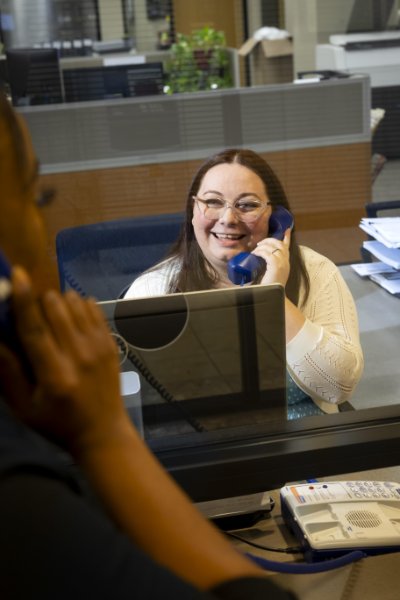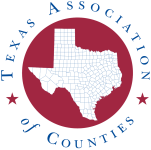County Magazine | April 30, 2024
Meeting the multilingual needs of Texas
Texas counties boost translation services in response to increasing diversity

Presidio County is one of the largest counties in Texas by land mass. It's situated on the border with Mexico, and nearly 75% of county residents speak Spanish — one of the highest proportions in the state.
Historically, Spanish speakers who call 911 for emergency services in the county have had to be transferred to a special phone line for translation, enter a password, have their Spanish translated to English and be routed back to the emergency operator. It’s a lengthy and confusing process that often took as long as five minutes, delaying response times.
Last year, Presidio County became the first county in the nation to begin using a service called Carbyne, which uses artificial intelligence to provide realtime audio translation of Spanish into English, nearly eliminating the need for the county’s translation line. When a Spanish-speaking caller dials in, their words are automatically translated into English, which comes through to the 911 operator as text on a screen, allowing them to see all the important details of the call so they can provide proper services more quickly.
It’s extremely accurate, said Monica Sanchez, communications supervisor for the Presidio County Sheriff’s Office.
“Before, our response times were approximately 10 minutes,” she said. “With AI, we are en route in two to three.”
The rural counties that make up the Rio Grande Council of Governments — from Hudspeth to Brewster — are now using Carbyne, which provides services in 14 languages. They have become a testbed for the new technology, and Marisa Quintanilla, the council’s director of regional services, said she expects many more counties across the nation will adopt it.

In a state as diverse as Texas, where languages other than English are now spoken in 35% of homes, according to census data, it is becoming increasingly important for governments to provide services in numerous languages. Most common languages in Texas Below are the most common languages spoken by Texas residents aged 5 and older who cannot speak English well. For context, the English-only speaking population in Texas is 17.7 million.
Counties have been stepping up efforts — both because of legal requirements and the needs of their residents — to provide these services for emergency response, elections, disaster communication and court business.
Fort Bend County officials realized the need for additional translation services after the 2020 census revealed they had not only the most diverse county in Texas but also one of the most diverse in the nation. The most common languages there, after English, are Spanish, Vietnamese and Chinese.
“For our customers coming in, we realized that some of them were having difficulty communicating,” County Clerk Laura Richard said.
Today, Fort Bend County offers court services in 240 languages through a service called LanguageLine. When residents come into the clerk’s offices, they are met with signs that advertise services in the most common languages spoken in the region. Residents can point to the language they speak on a card, then get on a two-way handset to communicate — one phone for them and one for the clerk. The phones are preprogrammed, and all the clerk has to do is press a red button that calls LanguageLine. They let the operator know what language they need and then an interpreter comes on the line who can translate the conversation. The county also has computers that can translate into American Sign Language for residents with impaired hearing.
These services are free and completely confidential and allow residents to carry out important business, such as obtaining marriage licenses and birth certificates, paying a fine or learning about a court case. For now, the services are offered only in office, but Richard said she hopes they eventually will be available remotely.

In addition to meeting the needs of residents and acting as better stewards of local government, counties are also legally required to provide language assistance in some instances, particularly when it comes to elections.
According to the 1975 Federal Voting Rights Act, if a certain number of voting-age residents speak a language other than English, the county is required to make accommodations for them at the polls, including providing ballots and voting information in their language. The language groups that meet these thresholds are announced in the federal register after every census and at middecade using population data from the American Community Survey.
In Harris County, ballots and voting information are required to be provided in Spanish, Vietnamese and Chinese, in addition to English, since enough residents speak these languages to trigger the requirements. Voters are also allowed to bring an interpreter with them to the polls to help them communicate with election officers and even accompany them to the voting station to translate the ballot.
Although Harris County is legally required to make accommodations in only four languages, it works to support residents who speak all languages by providing iPads with translation software to help themat the polls. The county said it is always looking for tools to help them meet federal guidelines.
In El Paso County, about 25% of residents have limited proficiency in English. The majority speak Spanish but also German, Arabic and Tagalog, a Filipino language. Lorey Gonzalez-Flores, program manager for the county’s Office of New Americans, said these populations have grown because of nearby Fort Bliss, which brings people from all over the country who are stationed there and end up staying and raising families in the area.
When Gonzalez-Flores came to work for the county in 2020, she began exploring a language access program using funds from the American Rescue Plan Act, which were provided to counties in response to the pandemic. With the funds, El Paso County, similar to Fort Bend County, will provide services in its county offices in multiple languages using LanguageLine. Residents will be able to select their language on an iPad and then connect to a translator to conduct important county business.
The service, which will be available later this summer, will be called iSpeak915, named for the El Paso County area code. Gonzalez- Flores said it was important to give it that name so that people in all the towns in the area — from Horizon to Anthony — feel included, not just those in El Paso. The Office of New Americans, which promotes inclusion and integration of people new to the country, is also exploring translating some of the most important county documents from its different departments so that people who speak languages other than English know about key programs. They have also been stepping up efforts to translate posts on their social media into Spanish, to reach more people.
“Many people come to El Paso and end up staying because it truly is a very welcoming place,” Gonzalez-Flores said. “El Paso is already known for this, but we want to put it on paper, formalize it and be more intentional in the services that we are providing.”

